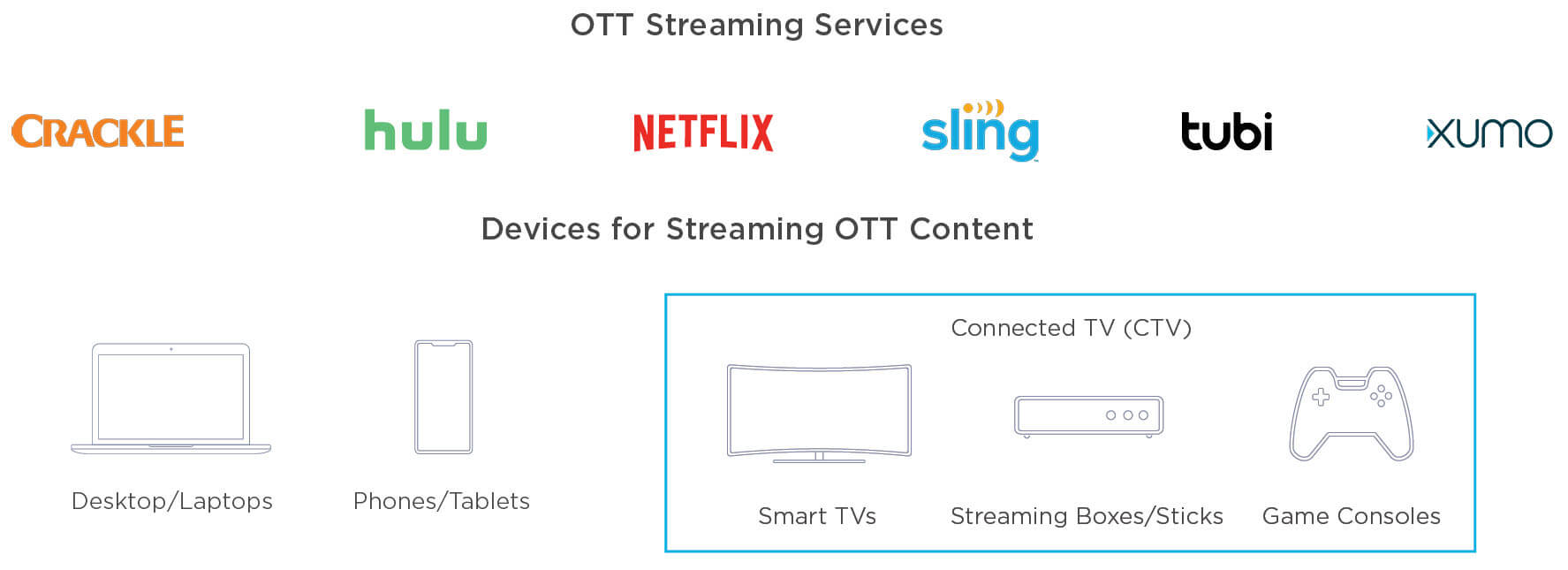Understanding how to use these popular acronyms
The advanced television ecosystem has opened up the advertising space, creating more content for users to watch, and thus, a wider audience for advertisers to market to.
For those users, watching a show or movie is as simple as turning on a viewing device and clicking a few buttons. However, for advertisers, knowing where, when, and how to serve ads on over-the-top (OTT) content through connected TV (CTV) devices becomes more complex. To simplify it, let’s begin by defining these terms.
What is the difference between OTT and CTV?
Advanced TV is confusing enough. Adding more acronyms into the marketing space doesn’t help clarify the concept. From a survey done by Brand Innovators, it is clear that there are different interpretations of these terms.
When given varied definitions of OTT and CTV, survey respondents failed to agree on one clear definition. Only 39% of respondents answered correctly when asked what CTV meant. While only 14% of respondents accurately agreed on an OTT definition.
Understandably, there needs to be more education around OTT and CTV to help explain the advanced TV space and aid in the adoption of more beneficial OTT advertising.
What is advanced TV?
Advanced television refers to all TV formats outside of the linear TV buying space and includes OTT and CTV. The advancements of how TV is viewed, when it’s viewed, and where it’s viewed have not only changed the user’s television experience but have also improved the targetability and addressability of TV advertising.
What is OTT?
The term OTT refers to television and film content streamed “over the top” of the internet directly to viewers, rather than through traditional broadcast, cable, or satellite mediums. CTV devices such as desktop/laptop, mobile phones, and tablets can stream content “over-the-top” from apps or websites.
What is CTV?
CTV describes TVs that are either directly internet-enabled (eg, smart TVs) or devices that are plugged into a TV to stream content “over the top” of the internet – think Amazon Fire, Roku, and Chromecast sticks, PlayStation, and Xbox gaming consoles, etc.).

Can you use them in a sentence?
Knowing what OTT and CTV mean is one thing. Knowing how to use them in conversation is another. Being able to correctly communicate these terms will not only help with your understanding but it will also help educate others. For example:
Use OTT when it doesn’t matter what device is being used.
I’m subscribed to three different OTT services.
Use CTV when talking about Smart TVs and streaming devices that connect to TVs.
My connected TV disconnected while watching my favorite show.
Streaming sports on YouTube on a smartphone is OTT but not CTV. Streaming the news through Peacock on a smart TV is both OTT and CTV.
Continuing your OTT/CTV journey
For advertisers, knowing the difference between OTT and CTV is essential in avoiding confusion and formulating a holistic marketing strategy. Dive deeper into the OTT/CTV space and learn more about how to utilize OTT/CTV advertising by downloading the guide: Over-the-Top and Connected TV: An Introduction.
Check out our next blog in the series: Bridging the CTV-Mobile Divide, to gain a better understanding of the user journeys on these platforms and how streaming services need to understand where their best users are really coming from.



